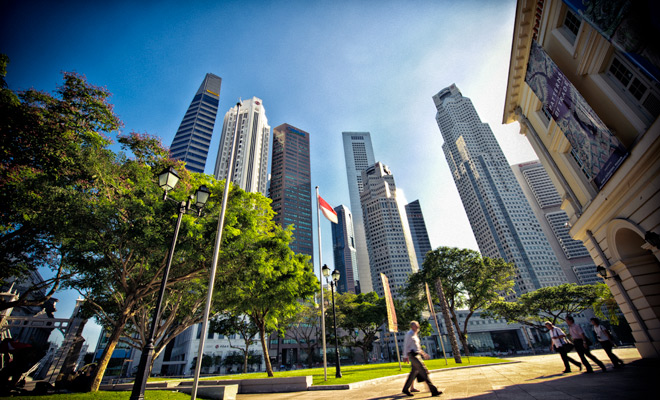Overview
OVERVIEW
Singapore has taken ambitious early actions on climate change. We made early policy choices that reduced our greenhouse gas (GHG) emissions, for example, by switching from fuel oil to natural gas – the cleanest form of fossil fuel – for power generation. In 2022, about 92% of its electricity was generated from natural gas, compared to 18% in 2000. There is no subsidy for electricity, to ensure that households and businesses use energy judiciously. Singapore was also the first country to impose a vehicle quota system to cap vehicle growth, and the only country to set a zero-growth rate for cars and motorcycles. These policy choices provide Singapore with a good foundation to achieve further decarbonisation. Successive environmental blueprints, such as the Singapore Green Plan 2030, have set forth our strategies and initiatives to achieve economic growth and a good living environment.
 Singapore’s development as a clean and green city is the result of decades of deliberate planning and effort.
Singapore’s development as a clean and green city is the result of decades of deliberate planning and effort.
Singapore is alternative energy disadvantaged — we are a low-lying island state of 734.3 km2 with one of the highest population densities globally (8,058 persons per km2). Our urban density and limited land area, relatively flat land, low wind speeds and lack of high-quality hydrothermal resources present serious difficulties in pursuing alternative energy options. Given our small land area and high population density, current nuclear fission technologies are not suitable for deployment in Singapore. There is also limited scope for solar photovoltaics (PV) deployment and for Singapore’s forests to be a significant carbon sink. We are monitoring newer technologies and will assess their suitability for deployment. Such circumstances are recognised under Article 4, paragraph 10 of the Convention, which recognises the circumstances of countries with “serious difficulties in switching to alternatives”.
Singapore is a very open economy and is dependent on the global supply chain for food and energy. As one of the most globalised economies and a trading nation with no natural resources, we are heavily dependent on the global supply chain for its food and energy. Our economic activity and emissions are also highly sensitive to the volatility of regional and global developments and escalating climate impacts. These challenges mean that Singapore’s climate strategies have to respond to international developments that may affect its economy, water, food, and energy, including preparing Singapore to be more climate resilient.
Singapore is dependent on effective international cooperation for the success of its decarbonisation measures. Collaboration with other countries, such as on clean energy technologies, regional power grids, clean energy trade, and carbon storage opportunities will be essential to Singapore. The ability for Singapore to achieve its decarbonisation targets will be contingent on such effective international cooperation and early maturity of decarbonisation technologies.
Singapore performs well in terms of carbon intensity globally. While Singapore’s share of the global gross domestic product (GDP) is small at 0.4%1, as an advanced manufacturing hub we play a key role to meet the demands of the region and the world, accounting for around 2.1% of the world’s total merchandise exports2. Energy efficiency is a key strategy for emissions reduction and Singapore aims to produce goods in an energy- and carbon-efficient manner. As energy is not subsidised in Singapore, companies are incentivised to use energy judiciously and embrace new energy efficient technologies. Strong pollution control laws also encourage industries to switch to cleaner fuel sources such as natural gas. The Singapore Government facilitates the adoption of energy efficiency and emissions reduction technologies through grants and other policy tools to overcome high upfront capital investments and other non-market barriers. Singapore is already among the 20 best-performing countries in terms of carbon intensity3. This reflects the substantial early action Singapore has taken to grow in an environmentally responsible way. This provides Singapore with a strong foundation to continue to strive for sustainable growth. Singapore is continuing to invest significantly in research and development to harness the potential of low-carbon technologies and explore effective international cooperation.
1 The World Bank: World Development Indicators database.
2 Source: World Trade Organization, Trade Profiles 2023 – Singapore.
3 Based on IEA data from IEA (2024) Greenhouse Gas Emissions from Energy, https://www.iea.org/data-and-statistics/data-product/greenhouse-gas-emissions-from-energy, All rights reserved.

